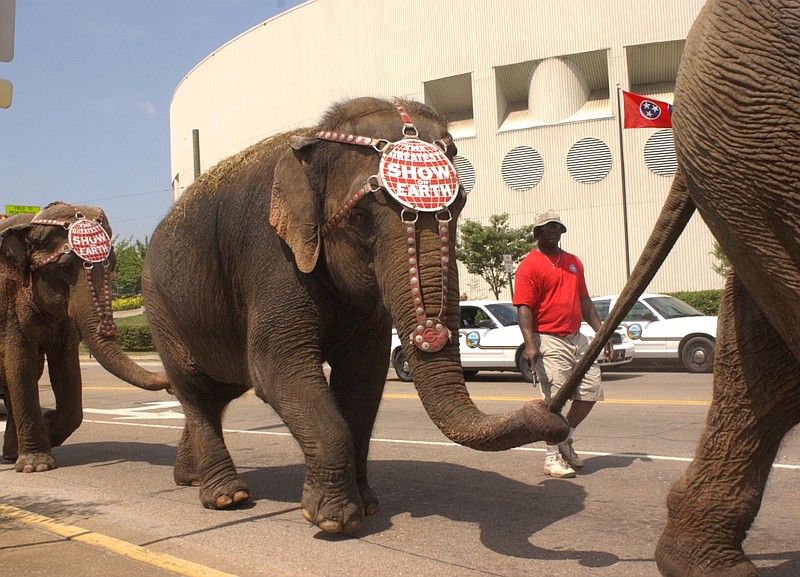The last time I saw a circus elephant was a few years ago; it was a joyless moment, almost exploitative, in the way strip clubs can be.
We'd taken the kids. There before us, the same drama played out as it has countless times across America: Somewhere among the trapeze flyers and fire-breathers and fat-shoe-clowns, out came elephant and trainer.
Circus folks will say that such a moment -- elephants on display before wide-eyed children -- will implant and excite a humble and devoted love of the wide natural world. Somewhere between our gasping and cheering, we'll learn to respect the animal kingdom.
"The circus plays an important part in making a connection between humans and the animal world," circus historian Dominique Jando wrote in the New York Times. "It shows animals as they are: big, alive, smelly, intimidating, nice, ugly, beautiful, real creatures of flesh and blood that are a rightful and necessary part of our universe."
That's not what we saw.
Here before us was this imperially beautiful and alarmingly sentient creature, a mammal that naturalists say is capable of the widest range of emotion and love. The crowd should have wept with awe at such animal majesty; instead, we just licked cotton candy from our fingers.
That circus did not teach my children humility and respect, but rather this terrible and arrogant lesson: That they can make even the most royal and regal of God's creatures bow down and belittle themselves on circus stools.
I am not alone in thinking this.
"There's been somewhat of a mood shift among our consumers," executives with Ringling Bros. and Barnum & Bailey Circus said last week. "A lot of people aren't comfortable with us touring with our elephants."
Ringling Bros. announced that by 2018, it would discontinue its use of circus elephants.
Doing so has historic implications.
"Elephants have been wildly popular in this country since 1796, when the first one arrived," wrote Janet Davis in the New York Times.
Elephants have long intersected with America. According to Davis, Thomas Jefferson instructed Lewis and Clark to look for elephants on their journey west. Crowds swarmed New York City on Easter Sunday in 1882, when P. T. Barnum arrived with Jumbo, a 6-ton elephant from Africa. When Jumbo died -- killed by a train, in a John Henry-kind-of-way -- Barnum kept touring with Jumbo's jumbo skeleton.
When the circus came to town in 19th-century America, the schools and factories closed for the day.
"In an age before electronic media, the circus offered Americans an intimate sense of the wider world right at home," Davis said.
Those days are gone.
In this digital age, the children who come to the circus have access to a virtual and global zoology their forefathers did not; with the phones in their pocket, children can watch videos about the emotional life and habitat destruction of the elephant balancing itself on the stool before them.
"At a time when we are slaughtering the last great herds in Africa and Asia, having elephants in circus acts sends the wrong message," author Virginia Morell wrote in the New York Times.
I was a boy when I first saw a circus elephant. I barely remember it.
What I do remember, with far greater and guttural clarity, are the other boyhood animals I encountered. The copperhead in the driveway. The dead squirrel in the ditch. The cicada on the oak tree. The huge rat we found under the house. The alligator that swam near our little jon boat.
It was not the wilds of Africa, but it was wild to me.
If we want our children to respect and love the animal world, we must let them encounter it on its own terms.
The greatest show on earth has been and always will be the earth itself.
Contact David Cook at dcook@timesfreepress.com or 423-757-6329. Follow him on Facebook at DavidCook TFP.

